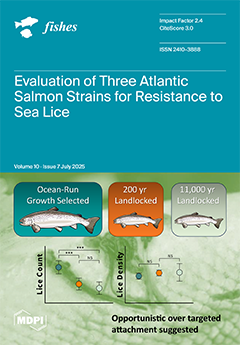Depensation (or an Allee effect) has recently been detected in stock–recruitment relationships (SRRs) in four Atlantic herring stocks and one Atlantic cod stock using a Bayesian statistical approach. In the present study, we define the Allee effect threshold (
BAET) for these five stocks and propose
BAET as a candidate limit reference point (LRP). We compare
BAET to traditional LRPs based on proportions of equilibrium unfished biomass (
B0) and biomass at maximum sustainable yield (
BMSY) assuming a Beverton–Holt or Ricker SRR with and without depensation, and to the change point from a hockey stick SRR (
BCP). The
BAET for the case studies exceeded 0.2
B0 and 0.4
BMSY for three of the case study stocks and exceedances of 0.2
B0 were more common when the Ricker form of the SRR was assumed. The
BAET estimates for all case studies were less than
BCP. When there is depensation in the SRR, multiple equilibrium states can exist when fishing at a fixed fishing mortality rate (
F) because the equilibrium recruits-per-spawner line at a given
F can intersect the SRR more than once. The equilibrium biomass is determined by whether there is excess recruitment at the initial projected stock biomass. Estimates of equilibrium
FMSY in the case studies were generally higher for SRRs that included the depensation parameter; however, the long-term
F that would lead the stock to crash (
Fcrash) in the depensation SRRs was often about half the
Fcrash for SRRs without depensation. When warranted, this study recommends exploration of candidate LRPs from depensatory SRRs, especially if Allee effect thresholds exceed commonly used limits, and simulation testing of management strategies for robustness to depensatory effects.
Full article





